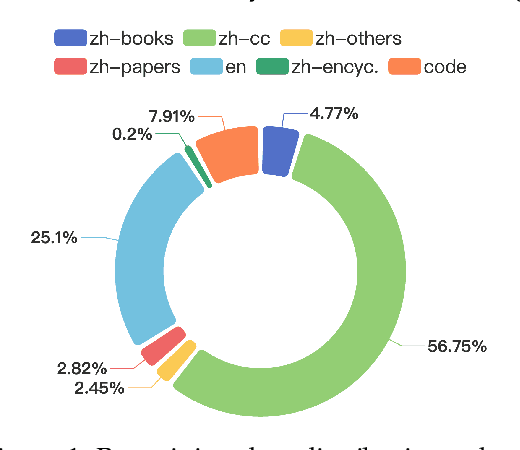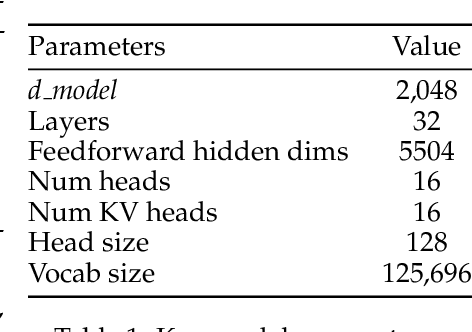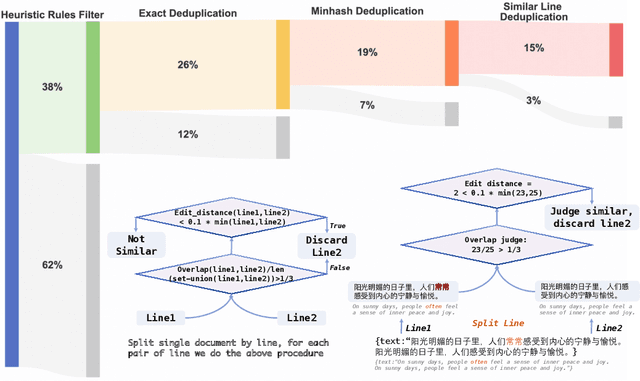Yuyang Cheng
Observing Micromotives and Macrobehavior of Large Language Models
Dec 10, 2024Abstract:Thomas C. Schelling, awarded the 2005 Nobel Memorial Prize in Economic Sciences, pointed out that ``individuals decisions (micromotives), while often personal and localized, can lead to societal outcomes (macrobehavior) that are far more complex and different from what the individuals intended.'' The current research related to large language models' (LLMs') micromotives, such as preferences or biases, assumes that users will make more appropriate decisions once LLMs are devoid of preferences or biases. Consequently, a series of studies has focused on removing bias from LLMs. In the NLP community, while there are many discussions on LLMs' micromotives, previous studies have seldom conducted a systematic examination of how LLMs may influence society's macrobehavior. In this paper, we follow the design of Schelling's model of segregation to observe the relationship between the micromotives and macrobehavior of LLMs. Our results indicate that, regardless of the level of bias in LLMs, a highly segregated society will emerge as more people follow LLMs' suggestions. We hope our discussion will spark further consideration of the fundamental assumption regarding the mitigation of LLMs' micromotives and encourage a reevaluation of how LLMs may influence users and society.
Chinese Tiny LLM: Pretraining a Chinese-Centric Large Language Model
Apr 09, 2024



Abstract:In this study, we introduce CT-LLM, a 2B large language model (LLM) that illustrates a pivotal shift towards prioritizing the Chinese language in developing LLMs. Uniquely initiated from scratch, CT-LLM diverges from the conventional methodology by primarily incorporating Chinese textual data, utilizing an extensive corpus of 1,200 billion tokens, including 800 billion Chinese tokens, 300 billion English tokens, and 100 billion code tokens. This strategic composition facilitates the model's exceptional proficiency in understanding and processing Chinese, a capability further enhanced through alignment techniques. Demonstrating remarkable performance on the CHC-Bench, CT-LLM excels in Chinese language tasks, and showcases its adeptness in English through SFT. This research challenges the prevailing paradigm of training LLMs predominantly on English corpora and then adapting them to other languages, broadening the horizons for LLM training methodologies. By open-sourcing the full process of training a Chinese LLM, including a detailed data processing procedure with the obtained Massive Appropriate Pretraining Chinese Corpus (MAP-CC), a well-chosen multidisciplinary Chinese Hard Case Benchmark (CHC-Bench), and the 2B-size Chinese Tiny LLM (CT-LLM), we aim to foster further exploration and innovation in both academia and industry, paving the way for more inclusive and versatile language models.
CMMMU: A Chinese Massive Multi-discipline Multimodal Understanding Benchmark
Jan 22, 2024Abstract:As the capabilities of large multimodal models (LMMs) continue to advance, evaluating the performance of LMMs emerges as an increasing need. Additionally, there is an even larger gap in evaluating the advanced knowledge and reasoning abilities of LMMs in non-English contexts such as Chinese. We introduce CMMMU, a new Chinese Massive Multi-discipline Multimodal Understanding benchmark designed to evaluate LMMs on tasks demanding college-level subject knowledge and deliberate reasoning in a Chinese context. CMMMU is inspired by and strictly follows the annotation and analysis pattern of MMMU. CMMMU includes 12k manually collected multimodal questions from college exams, quizzes, and textbooks, covering six core disciplines: Art & Design, Business, Science, Health & Medicine, Humanities & Social Science, and Tech & Engineering, like its companion, MMMU. These questions span 30 subjects and comprise 39 highly heterogeneous image types, such as charts, diagrams, maps, tables, music sheets, and chemical structures. CMMMU focuses on complex perception and reasoning with domain-specific knowledge in the Chinese context. We evaluate 11 open-source LLMs and one proprietary GPT-4V(ision). Even GPT-4V only achieves accuracies of 42%, indicating a large space for improvement. CMMMU will boost the community to build the next-generation LMMs towards expert artificial intelligence and promote the democratization of LMMs by providing diverse language contexts.
 Add to Chrome
Add to Chrome Add to Firefox
Add to Firefox Add to Edge
Add to Edge